Turkey
| Republic of Turkey
Türkiye Cumhuriyeti (Turkish)
| |
|---|---|
Anthem:
| |
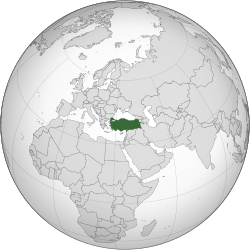 | |
| Capital | Ankara 39°55′N 32°50′ECoordinates: 39°55′N 32°50′E |
| Largest city | Istanbul 41°1′N 28°57′E |
| Official languages | Turkish |
| Spoken languages[1] | |
| Ethnic groups | |
| Demonym | |
| Government | Unitary presidentialconstitutional republic |
| Recep Tayyip Erdoğan | |
| Fuat Oktay | |
| Binali Yıldırım | |
| Legislature | Grand National Assembly |
| Formation | |
| 19 May 1919 | |
| 24 July 1923 | |
| 29 October 1923 | |
| Area | |
• Total
| 783,356 km2(302,455 sq mi) (36th) |
• Water (%)
| 1.3 |
| Population | |
• 2017 estimate
| |
• Density
| 105[3]/km2 (271.9/sq mi) (107th) |
| GDP (PPP) | 2018 estimate |
• Total
| $2.320 trillion[4] (13th) |
• Per capita
| $28,346[4] (45th) |
| GDP (nominal) | 2018 estimate |
• Total
| $909 billion[4] (17th) |
• Per capita
| $11,114[4] (60th) |
| Gini (2013) | medium · 56th |
| HDI (2014) | high · 72nd |
| Currency | Turkish lira (₺) (TRY) |
| Time zone | FET (UTC+3) |
| Date format | dd/mm/yyyy (AD) |
| Drives on the | right |
| Calling code | +90 |
| ISO 3166 code | TR |
| Internet TLD | .tr |
Website
www.türkiye.gov.tr | |
Turkey (Turkish: Türkiye [ˈtyɾcije]), officially the Republic of Turkey (Turkish: Türkiye Cumhuriyeti [ˈtyɾcije d͡ʒumˈhuɾijeti] ( listen)), is a transcontinental country in Eurasia, mainly in Anatolia in Western Asia, with a smaller portion on the Balkan peninsula in Southeast Europe.[7] Turkey is bordered by eight countries with Greece and Bulgaria to the northwest; Georgia to the northeast; Armenia, the Azerbaijan and Iran to the east; and Iraq and Syria to the south. The country is encircled by seas on three sides with the Aegean Sea to the west, the Black Sea to the north, and the Mediterranean Sea to the south. The Bosphorus, the Sea of Marmara, and the Dardanelles, which together form the Turkish Straits, divide Thrace and Anatolia and separate Europe and Asia.[8] Ankara is the capital while Istanbul is the country's largest city and main cultural and commercial centre, classified as a leading global city.[9]
listen)), is a transcontinental country in Eurasia, mainly in Anatolia in Western Asia, with a smaller portion on the Balkan peninsula in Southeast Europe.[7] Turkey is bordered by eight countries with Greece and Bulgaria to the northwest; Georgia to the northeast; Armenia, the Azerbaijan and Iran to the east; and Iraq and Syria to the south. The country is encircled by seas on three sides with the Aegean Sea to the west, the Black Sea to the north, and the Mediterranean Sea to the south. The Bosphorus, the Sea of Marmara, and the Dardanelles, which together form the Turkish Straits, divide Thrace and Anatolia and separate Europe and Asia.[8] Ankara is the capital while Istanbul is the country's largest city and main cultural and commercial centre, classified as a leading global city.[9]
Approximately 70–80% of the country's citizens identify themselves as ethnic Turks.[10][11] Kurds are the largest minority at about 20% of the population; other ethnic minorities include Circassians, Albanians, Arabs, Bosniaks, and Laz people.[11][12][13][14][15]The official language is Turkish, which is the most widely spoken Turkic language in the world.[16] Minority languages spoken today in Turkey include Kurmanji, Bosnian, Arabic, Zaza, Kabardian, and several others.[1]
The area of Turkey has been inhabited since the Paleolithic age by various ancient Anatolian civilisations, as well as Assyrians, Greeks, Thracians, Phrygians, Urartians, and Armenians.[17][18][19][20] After Alexander the Great conquered these lands, the area was Hellenized, a process which continued under the Roman Empire and its transition into the Byzantine Empire.[19][21] The Seljuk Turks began migrating into the area in the 11th century, and their victory over the Byzantines at the Battle of Manzikert in 1071 symbolizes the start and foundation of Turkey.[22] The Seljuk Sultanate of Rûm ruled Anatolia until the Mongol invasion in 1243, when it disintegrated into small Turkish principalities.[23]
From the end of the 13th century the Ottomans started uniting these Turkish principalities in Anatolia and then went on to create an empire that encompassed much of Southeast Europe, West Asia and North Africa.[24] The Ottoman Empire became a world power beginning with the reign of Suleiman the Magnificent in the early modern period.[25] It remained powerful and influential for two more centuries, until important setbacks in the 19th and 20th century forced it to cede strategic territories in Europe, which signalled the loss of its former military strength and wealth. After the 1913 Ottoman coup d'état, which effectively put the country under the control of the Three Pashas, the Ottoman Empire decided to join the Central Powers during World War I. During the war, the Ottoman government committed genocides against its Armenian, Assyrian and Pontic Greek subjects.[I][26] Following the war, the conglomeration of territories and peoples that formerly comprised the Ottoman Empire was partitioned into several new states.[27] The Turkish War of Independence, initiated by Mustafa Kemal Atatürk and his colleagues against occupying Allies, resulted in the abolition of monarchy in 1922 and the establishment of the Republic of Turkey in 1923, with Atatürk as its first president.[28] Atatürk enacted numerous reforms, many of which incorporated various aspects of Western thought, philosophy, and customs into the new form of Turkish government.[29]
Turkey is a charter member of the UN, an early member of NATO, the IMF and the World Bank, and a founding member of the OECD, OSCE, BSEC, OIC and G-20. After becoming one of the first members of the Council of Europe in 1949, Turkey became an associate member of the EEC in 1963, joined the EU Customs Union in 1995 and started accession negotiations with the European Union in 2005 which have been effectively stopped by the EU in 2017 due to "Turkey’s path toward autocratic rule".[30]Turkey's economy and diplomatic initiatives led to its recognition as a regional power while its location has given it geopolitical and strategic importance throughout history.[31][32] Turkey is a secular, unitary, formerly parliamentary republic which adopted a presidential system with a referendum in 2017; the new system came into effect with the presidential election in 2018. Turkey's current administration headed by president Recep Tayyip Erdoğan of the AKP has enacted measures to increase the influence of Islam, reversed and undermined Kemalist policies, and has reversed earlier reforms such as freedom of the press.[33][34]
Contents
[hide]Etymology
The name of Turkey (Turkish: Türkiye) can be divided into two components: the ethnonym Türk and the abstract suffix –iye meaning "owner", "land of" or "related to" (originally derived from the Greek and Latin suffixes –ia in Tourkia (Τουρκία) and Turchia). The first recorded use of the term "Türk" or "Türük" as an autonym is contained in the Old Turkicinscriptions of the Göktürks (Celestial Turks) of Central Asia (c. AD 735).[35] The Turkic self-designation Türk is first attested in reference to the Göktürks in the 6th century AD. A letter by Ishbara Qaghan to Emperor Wen of Sui in 585 described him as "the Great Turk Khan."[36] An early form of the same name may be reflected in the form of "tie-le" (鐵勒) or "tu-jue" (突厥), name given by the Chinese to the people living south of the Altay Mountains of Central Asia as early as 177 BC.[37] The Greek name, Tourkia (Greek: Τουρκία) was used by the Byzantine emperor and scholar Constantine VII Porphyrogenitus in his book De Administrando Imperio,[38][39] though in his use, "Turks" always referred to Magyars.[40]Similarly, the medieval Khazar Empire, a Turkic state on the northern shores of the Black and Caspian seas, was referred to as Tourkia (Land of the Turks) in Byzantine sources.[41]However, the Byzantines later began using this name to define the Seljuk-controlled parts of Anatolia in the centuries that followed the Battle of Manzikert in 1071. The medieval Greek and Latin terms did not designate the same geographic area now known as Turkey. Instead, they were mostly synonymous with Tartary, a term including Khazaria and the other khaganates of the Central Asian steppe, until the appearance of the Seljuks and the rise of the Ottoman Empire in the 14th century, reflecting the progress of the Turkic expansion.
History
Prehistory of Anatolia and Eastern Thrace
The Anatolian peninsula, comprising most of modern Turkey, is one of the oldest permanently settled regions in the world. Various ancient Anatolian populations have lived in Anatolia, from at least the Neolithic period until the Hellenistic period.[19] Many of these peoples spoke the Anatolian languages, a branch of the larger Indo-European language family.[44] In fact, given the antiquity of the Indo-European Hittite and Luwian languages, some scholars have proposed Anatolia as the hypothetical centre from which the Indo-European languages radiated.[45] The European part of Turkey, called Eastern Thrace, has also been inhabited since at least forty thousand years ago, and is known to have been in the Neolithic era by about 6000 BC.[20]
Göbekli Tepe is the site of the oldest known man-made religious structure, a temple dating to circa 10,000 BC,[42] while Çatalhöyük is a very large Neolithic and Chalcolithic settlement in southern Anatolia, which existed from approximately 7500 BC to 5700 BC. It is the largest and best-preserved Neolithic site found to date and in July 2012 was inscribed as a UNESCO World Heritage Site.[46]The settlement of Troy started in the Neolithic Age and continued into the Iron Age.[47]
The earliest recorded inhabitants of Anatolia were the Hattians and Hurrians, non-Indo-European peoples who inhabited central and eastern Anatolia, respectively, as early as ca. 2300 BC. Indo-European Hittites came to Anatolia and gradually absorbed the Hattians and Hurrians ca. 2000–1700 BC. The first major empire in the area was founded by the Hittites, from the 18th through the 13th century BC. The Assyrians conquered and settled parts of southeastern Turkey as early as 1950 BC until the year 612 BC.[48][49] Urartu re-emerged in Assyrian inscriptions in the 9th century BC as a powerful northern rival of Assyria.[50] Following the collapse of the Hittite empire c. 1180 BC, the Phrygians, an Indo-European people, achieved ascendancy in Anatolia until their kingdom was destroyed by the Cimmerians in the 7th century BC.[51] Starting from 714 BC, Urartu shared the same fate and dissolved in 590 BC,[52] when it was conquered by the Medes. The most powerful of Phrygia's successor states were Lydia, Caria and Lycia.
Antiquity
Starting around 1200 BC, the coast of Anatolia was heavily settled by Aeolian and Ionian Greeks. Numerous important cities were founded by these colonists, such as Miletus, Ephesus, Smyrna (now İzmir) and Byzantium (now Istanbul), the latter founded by Greek colonists from Megara in 657 BC. The first state that was called Armenia by neighbouring peoples was the state of the ArmenianOrontid dynasty, which included parts of eastern Turkey beginning in the 6th century BC. In Northwest Turkey, the most significant tribal group in Thrace was the Odyrisians, founded by Teres I.[58]
All of modern-day Turkey was conquered by the Persian Achaemenid Empire during the 6th century BC.[59] The Greco-Persian Wars started when the Greek city states on the coast of Anatolia rebelled against Persian rule in 499 BC. The territory of Turkey later fell to Alexander the Great in 334 BC,[60]which led to increasing cultural homogeneity and Hellenization in the area.[19]
Following Alexander's death in 323 BC, Anatolia was subsequently divided into a number of small Hellenistic kingdoms, all of which became part of the Roman Republic by the mid-1st century BC.[61]The process of Hellenization that began with Alexander's conquest accelerated under Roman rule, and by the early centuries of the Christian Era, the local Anatolian languages and cultures had become extinct, being largely replaced by ancient Greek language and culture.[21][62] From the 1st century BC up to the 3rd century CE, large parts of modern-day Turkey were contested between the Romans and neighbouring Parthians through the frequent Roman-Parthian Wars.
Early Christian and Byzantine period
According to Acts of Apostles 11,[66] a city in the southern of Turkey, Antioch (now Antakya) is the birthplace of the first Christian community.[67]
In 324, Constantine I chose Byzantium to be the new capital of the Roman Empire, renaming it New Rome. Following the death of Theodosius I in 395 and the permanent division of the Roman Empire between his two sons, the city, which would popularly come to be known as Constantinople, became the capital of the Eastern Roman Empire. This empire, which would later be branded by historians as the Byzantine Empire, ruled most of the territory of present-day Turkey until the Late Middle Ages;[68] although the eastern regions remained in firm Sasanian hands up to the first half of the seventh century. The frequent Byzantine-Sassanid Wars, as part of the centuries long-lasting Roman-Persian Wars, fought between the neighbouring rivalling Byzantines and Sasanians, took place in various parts of present-day Turkey and decided much of the latter's history from the fourth century up to the first half of the seventh century.
Several cities in Turkey, such as Istanbul (Constantinople), Iznik (Nicaea), and Selçuk (Ephesus) were the hosts of ecumenical gatherings in early Christianity.
Seljuks and the Ottoman Empire
The House of Seljuk was a branch of the Kınık Oğuz Turks who resided on the periphery of the Muslim world, in the Yabgu Khaganate of the Oğuz confederacy, to the north of the Caspian and Aral Seas, in the 9th century.[70] In the 10th century, the Seljuks started migrating from their ancestral homeland into Persia, which became the administrative core of the Great Seljuk Empire, after its foundation by Tughril.[71]
In the latter half of the 11th century, the Seljuk Turks began penetrating into medieval Armenia and the eastern regions of Anatolia. In 1071, the Seljuks defeated the Byzantines at the Battle of Manzikert, starting the Turkification process in the area; the Turkish language and Islamwere introduced to Armenia and Anatolia, gradually spreading throughout the region. The slow transition from a predominantly Christian and Greek-speaking Anatolia to a predominantly Muslim and Turkish-speaking one was underway. The Mevlevi Order of dervishes, which was established in Konya during the 13th century by Sufi poet Celaleddin Rumi, played a significant role in the Islamization of the diverse people of Anatolia who had previously been Hellenized.[72][73] Thus, alongside the Turkification of the territory, the culturally Persianized Seljuks set the basis for a Turko-Persian principal culture in Anatolia,[74] which their eventual successors, the Ottomans, would take over.[75][76]
In 1243, the Seljuk armies were defeated by the Mongols at the Battle of Köse Dağ, causing the Seljuk Empire's power to slowly disintegrate. In its wake, one of the Turkish principalities governed by Osman I would evolve over the next 200 years into the Ottoman Empire. In 1453, the Ottomans completed their conquest of the Byzantine Empire by capturing its capital, Constantinople.[77]
In 1514, Sultan Selim I (1512–1520) successfully expanded the empire's southern and eastern borders by defeating Shah Ismail I of the Safavid dynasty in the Battle of Chaldiran. In 1517, Selim I expanded Ottoman rule into Algeria and Egypt, and created a naval presence in the Red Sea. Subsequently, a contest started between the Ottoman and Portuguese empires to become the dominant sea power in the Indian Ocean, with a number of naval battles in the Red Sea, the Arabian Sea and the Persian Gulf. The Portuguese presence in the Indian Ocean was perceived as a threat to the Ottoman monopoly over the ancient trade routes between East Asia and Western Europe. Despite the increasingly prominent European presence, the Ottoman Empire's trade with the east continued to flourish until the second half of the 18th century.[80]
The Ottoman Empire's power and prestige peaked in the 16th and 17th centuries, particularly during the reign of Suleiman the Magnificent, who personally instituted major legislative changes relating to society, education, taxation and criminal law. The empire was often at odds with the Holy Roman Empire in its steady advance towards Central Europe through the Balkans and the southern part of the Polish-Lithuanian Commonwealth.[81] At sea, the Ottoman Navy contended with several Holy Leagues, such as those in 1538, 1571, 1684 and 1717 (composed primarily of Habsburg Spain, the Republic of Genoa, the Republic of Venice, the Knights of St. John, the Papal States, the Grand Duchy of Tuscany and the Duchy of Savoy), for the control of the Mediterranean Sea. In the east, the Ottomans were often at war with Safavid Persia over conflicts stemming from territorial disputes or religious differences between the 16th and 18th centuries.[82] The Ottoman wars with Persiacontinued as the Zand, Afsharid, and Qajar dynasties succeeded the Safavids in Iran, until the first half of the 19th century. From the 16th to the early 20th centuries, the Ottoman Empire also fought many wars with the Russian Tsardom and Empire. These were initially about Ottoman territorial expansion and consolidation in southeastern and eastern Europe; but starting from the latter half of the 18th century, they became more about the survival of the Ottoman Empire, which had begun to lose its strategic territories on the northern Black Sea coast to the advancing Russians.
From the second half of the 18th century onwards, the Ottoman Empire began to decline. The Tanzimat reforms of the 19th century, which had been instituted by Mahmud II, were aimed to modernise the Ottoman state in line with the progress that had been made in Western Europe. The efforts of Midhat Pasha during the late Tanzimat era led the Ottoman constitutional movement of 1876, which introduced the First Constitutional Era, but these efforts proved to be inadequate in most fields, and failed to stop the dissolution of the empire.[84] As the empire gradually shrank in size, military power and wealth, especially after the Ottoman economic crisis and default in 1875[85] which led to uprisings in the Balkan provinces that culminated into the Russo-Turkish War of 1877–78, many Balkan Muslims migrated to the Empire's heartland in Anatolia,[86][87] along with the Circassians fleeing the Russian conquest of the Caucasus. The decline of the Ottoman Empire led to a rise in nationalist sentiment among its various subject peoples, leading to increased ethnic tensions which occasionally burst into violence, such as the Hamidian massacres of Armenians.[88]
The Young Turk Revolution in 1908 restored the Ottoman constitution and parliament 30 years after their suspension by Sultan Abdul Hamid II in 1878, which is known as the Second Constitutional Era, but the 1913 Ottoman coup d'état effectively put the country under the control of the Three Pashas, making sultans Mehmed V and Mehmed VI largely symbolic figureheads with no real political power.
The Ottoman Empire entered World War I on the side of the Central Powers and was ultimately defeated. During the war, the empire's Armenians were deported to Syria as part of the Armenian Genocide. As a result, an estimated 800,000 to 1,500,000 Armenians were killed.[89][90][91][92] The Turkish government has refused to acknowledge the events as genocide and claims that Armenians were only relocated from the eastern war zone.[93] Genocidal campaigns were also committed against the empire's other minority groups such as the Assyrians and Greeks.[94][95][96] Following the Armistice of Mudros on 30 October 1918, the victorious Allied Powers sought to partition the Ottoman state through the 1920 Treaty of Sèvres.[77]
Republic of Turkey
The occupation of Istanbul (1918) and Izmir (1919) by the Allies in the aftermath of World War I prompted the establishment of the Turkish National Movement. Under the leadership of Mustafa Kemal Pasha, a military commander who had distinguished himself during the Battle of Gallipoli, the Turkish War of Independence (1919–1923) was waged with the aim of revoking the terms of the Treaty of Sèvres.[97]
By 18 September 1922 the Greek, Armenian and French armies were expelled,[98] and the Ankara-based Turkish regime, which had declared itself the legitimate government of the country on 23 April 1920, started to formalise the legal transition from the old Ottoman into the new Republican political system. On 1 November 1922, the Turkish Parliament in Ankara formally abolished the Sultanate, thus ending 623 years of monarchical Ottoman rule. The Treaty of Lausanne of 24 July 1923 led to the international recognition of the sovereignty of the newly formed "Republic of Turkey" as the successor state of the Ottoman Empire, and the republic was officially proclaimed on 29 October 1923 in Ankara, the country's new capital.[99] The Lausanne Convention stipulated a population exchange between Greece and Turkey, whereby 1.1 million Greeks left Turkey for Greece in exchange for 380,000 Muslims transferred from Greece to Turkey.[100]
Mustafa Kemal became the republic's first President and subsequently introduced many radical reforms with the aim of transforming the old religion-based and multi-communal Ottoman state system (constitutional monarchy) into an essentially Turkish nation state(parliamentary republic) with a secular constitution.[101] With the Surname Law of 1934, the Turkish Parliament bestowed upon Mustafa Kemal the honorific surname "Atatürk" (Father of the Turks).[97]
İsmet İnönü became Turkey's second President following Atatürk's death on 10 November 1938. In 1939 Turkey annexed the Republic of Hatay. Turkey remained neutral during most of World War II, but entered the closing stages of the war on the side of the Allies on 23 February 1945. On 26 June 1945, Turkey became a charter member of the United Nations.[103] In the following year, the single-party periodin Turkey came to an end, with the first multiparty elections in 1946. The Truman Doctrine in 1947 enunciated American intentions to guarantee the security of Turkey and Greece during the Cold War, and resulted in large-scale U.S. military and economic support. In 1948 both countries were included in the Marshall Plan and the OEEC for rebuilding European economies.[104] In 1949 Turkey became a member of the Council of Europe. The Democratic Party established by Celâl Bayar won the 1950, 1954 and 1957 general elections and stayed in power for a decade, with Adnan Menderes as the Prime Minister and Bayar as the President. After participating with the United Nations forces in the Korean War, Turkey joined NATO in 1952, becoming a bulwark against Soviet expansion into the Mediterranean. Turkey subsequently became a founding member of the OECD in 1961, and an associate member of the EEC in 1963.[105]
The country's tumultuous transition to multiparty democracy was interrupted by military coups d'état in 1960, 1971, and 1980, as well as a military memorandum in 1997.[106][107] Between 1960 and the end of the 20th century, the prominent leaders in Turkish politics who achieved multiple election victories were Süleyman Demirel, Bülent Ecevitand Turgut Özal.
Following a decade of Cypriot intercommunal violence and the coup in Cyprus on 15 July 1974 staged by the EOKA B paramilitary organisation, which overthrew President Makarios and installed the pro-Enosis (union with Greece) Nikos Sampson as dictator, Turkey invaded Cyprus on 20 July 1974 by unilaterally exercising Article IV in the Treaty of Guarantee (1960), but without restoring the status quo ante at the end of the military operation.[108] In 1983 the Turkish Republic of Northern Cyprus, which is recognised only by Turkey, was established.[109] The Annan Plan for reunifying the island was supported by the majority of Turkish Cypriots, but rejected by the majority of Greek Cypriots, in separate referendums in 2004. However, negotiations for solving the Cyprus dispute are still ongoing between Turkish Cypriot and Greek Cypriot political leaders.[110]
In 1984, the Kurdistan Workers' Party (PKK), a Kurdish separatist group (listed as a terrorist organization by NATO, the United States and the European Union), began an armed insurgency campaign against Turkey. The conflict has claimed over 40,000 lives to date.[111]
Since the liberalisation of the Turkish economy in the 1980s, the country has enjoyed stronger economic growth and greater political stability.[112] Turkey applied for full membership of the EEC in 1987, joined the EU Customs Union in 1995 and started accession negotiations with the European Union in 2005.[30]
In 2013, widespread protests erupted in many Turkish provinces, sparked by a plan to demolish Gezi Park but soon growing into general anti-government dissent.[113] On 15 July 2016, an unsuccessful coup attempt tried to oust the government.[114] As a reaction to the failed coup d'état, the government is currently carrying out mass purges.[115][116]
Administrative divisions
Turkey has a unitary structure in terms of administration and this aspect is one of the most important factors shaping the Turkish public administration. When three powers (executive, legislative and judiciary) are taken into account as the main functions of the state, local administrations have little power. Turkey doesn't have a federal system, and the provinces are subordinate to the central government in Ankara. Local administrations were established to provide services in place and the government is represented by the province governors (vali) and town governors (kaymakam). Other senior public officials are also appointed by the central government instead of the mayors (belediye başkanı) or elected by constituents.[117] Turkish municipalities have local legislative bodies (belediye meclisi) for decision-making on municipal issues.
Within this unitary framework, Turkey is subdivided into 81 provinces (il or vilayet) for administrative purposes. Each province is divided into districts (ilçe), for a total of 923 districts.[118] Turkey is also subdivided into 7 regions (bölge) and 21 subregions for geographic, demographic and economic purposes; this does not refer to an administrative division. The centralised structure of decision-making in Ankara is considered by some academicians as an impediment to good local governance,[119][120] and occasionally causes resentment in the municipalities of urban centres that are inhabited largely by ethnic minority groups, such as the Kurds.[121][122][123] Steps towards decentralisation since 2004 have proven to be a highly controversial topic in Turkey.[119][120] The efforts to decentralise the administrative structure are also driven by the European Charter of Local Self-Governmentand with Chapter 22 ("Regional Policy & Coordination of Structural Instruments") of the acquis of the European Union.[124][125][126] A decentralisation program for Turkey has been a topic of discussion in the country's academics, politics and the broader public.[127][128]
Politics
 |
| Recep Tayyip Erdoğan President |
Between 1923 and 2018, Turkey was a parliamentary representative democracy. A presidential system was adopted with a referendum in 2017; the new system came into effect with the presidential election in 2018 and gives the President complete control of the executive, including the power to issue decrees, appoint his own cabinet, draw up the budget, dissolve parliament by calling early elections, and pack the bureaucracy and the courts with political appointees.[129] The office of Prime Minister has been abolished and its powers (together with those of the Cabinet) have been transferred to the President, who is the head of state and is elected for a five-year term by direct elections.[129] Recep Tayyip Erdoğan is the first president elected by direct voting. Turkey's constitution governs the legal framework of the country. It sets out the main principles of government and establishes Turkey as a unitary centralised state.
Executive power is exercised by the President, while the legislative power is vested in the unicameral parliament, the Grand National Assembly of Turkey. The judiciary is nominally independent from the executive and the legislature, but the constitutional changes that came into effect with the referendums in 2007, 2010 and 2017 gave larger powers to the President and the ruling party for appointing or dismissing judges and prosecutors.[130] The Constitutional Court is charged with ruling on the conformity of laws and decrees with the constitution. The Council of State is the tribunal of last resort for administrative cases, and the High Court of Appeals for all others.[131]
Universal suffrage for both sexes has been applied throughout Turkey since 1933 and before most countries, and every Turkish citizen who has turned 18 years of age has the right to vote. There are 600 members of parliament who are elected for a five-year term by a party-list proportional representation system from 85 electoral districts. The Constitutional Court can strip the public financing of political parties that it deems anti-secular or separatist, or ban their existence altogether.[132][133] The electoral threshold is 10 percent of the votes.[134]
Supporters of Atatürk's reforms are called Kemalists, as distinguished from Islamists, representing the two diverging views regarding the role of religion in legislation, education and public life.[135] The Kemalist view supports a form of democracy with a laicist constitution and Westernised secular lifestyle, while maintaining the necessity of state intervention in the economy, education and other public services.[135] Since its foundation as a republic in 1923, Turkey has developed a strong tradition of secularism.[136] However, since the 1980s, issues such as income inequality and class distinction have given rise to Islamic populism, a movement that supports a larger role for religion in government policies, and in theory supports obligation to authority, communal solidarity and social justice; though what that entails in practice is often contested.[135] Turkey under Recep Tayyip Erdoğan and the AKP has been described as becoming increasingly authoritarian.[137][138][139][140] Prior to the constitutional referendum in 2017 the Council of Europe saw Turkey drifting towards an autocracy, warning of a "dramatic regression of its democratic order".[141][142][143] Many elements in the constitutional reform package that was approved with the referendum in 2017 have increased concerns in the European Union regarding democracy and the separation of powers in Turkey.[144][145][146][147]
As of 2017 the Economist Intelligence Unit's Democracy Index rates Turkey at 4.88 (on a 0–10 scale), classifying Turkey as a Hybrid Regime.[148] In 2018, Freedom House rated Turkey at 32 (on a 0–100 scale) as Not Free.[149]
Human rights
Human rights in Turkey have been the subject of some controversy and international condemnation. Between 1998 and 2008 the European Court of Human Rights made more than 1,600 judgements against Turkey for human rights violations, particularly regarding the right to life, and freedom from torture. Other issues, such as Kurdish rights, women's rights, LGBT rights, and press freedom, have also attracted controversy. Turkey's human rights record continues to be a significant obstacle to future membership of the EU.[150]
According to the Committee to Protect Journalists, the AKP government has waged one of the world's biggest crackdowns on media freedom.[151][152] A large number of journalists have been arrested using charges of "terrorism" and "anti-state activities" such as the Ergenekon and Balyoz cases, while thousands have been investigated on charges such as "denigrating Turkishness" or "insulting Islam" in an effort to sow self-censorship.[151] As of 2017, the CPJ identified 81 jailed journalists in Turkey (including the editorial staff of Cumhuriyet, Turkey's oldest newspaper still in circulation), all directly held for their published work (ranking 1st in the world, more than in Iran, Eritrea or China);[152] while Freemuse identified 9 musicians imprisoned for their work (ranking 3rd after Russia and China).[153] A former US State Department spokesman, Philip J. Crowley, said that the United States had "broad concerns about trends involving intimidation of journalists in Turkey."[154] Turkey's media is rated as not free by Freedom House.[155] In its resolution "The functioning of democratic institutions in Turkey" on 22 June 2016, the Parliamentary Assembly of the Council of Europe warned that "recent developments in Turkey pertaining to freedom of the media and of expression, erosion of the rule of law and the human rights violations in relation to anti-terrorism security operations in south-east Turkey have (...) raised serious questions about the functioning of its democratic institutions."[156]
On 20 May 2016, the Turkish parliament stripped almost a quarter of its members of immunity from prosecution, including 101 deputies from the pro-Kurdish HDP and the main opposition CHP party.[157] In reaction to the failed coup d'état on 15 July 2016, over 160,000 judges, teachers, police and civil servants have been suspended or dismissed, 50,000 have been formally arrested,[158] and 130 media organisations, including 16 television broadcasters and 45 newspapers,[159] have been closed by the government of Turkey.[160] 160 journalists have been imprisoned.[161]
On 29 April 2017, Turkish authorities blocked online access to Wikipedia in all languages across Turkey.[162][163] The restrictions were imposed in the context of the 2016–17 purgesfollowing the 2016 Turkish coup d'état attempt, a few weeks after a significant constitutional referendum, and following more selective partial blocking of Wikipedia content in previous years.[164] Following the ban, Jimmy Wales, Wikipedia's founder, was disinvited from the World Cities Expo in Istanbul from 15 to 18 May.[165] Turkish law professor Yaman Akdeniz estimates that Wikipedia is one of about 127,000 websites blocked by Turkish authorities. An estimated 45 percent of Turks have circumvented the Internet blocks, at one time or another, by using a virtual private network (VPN).[166]
Law
Turkey's judicial system has been wholly integrated with the system of continental Europe. For instance, the Turkish Civil Code has been modified by incorporating elements mainly of the Swiss Civil Code and Code of Obligations, and the German Commercial Code. The Administrative Code bears similarities with its French counterpart, and the Penal Code with its Italian counterpart.[167]
Turkey has adopted the principle of the separation of powers. In line with this principle, judicial power is exercised by independent courts on behalf of the Turkish nation. The independence and organisation of the courts, the security of the tenure of judges and public prosecutors, the profession of judges and prosecutors, the supervision of judges and public prosecutors, the military courts and their organisation, and the powers and duties of the high courts are regulated by the Turkish Constitution.[168]
According to Article 142 of the Turkish Constitution, the organisation, duties and jurisdiction of the courts, their functions and the trial procedures are regulated by law. In line with the aforementioned article of the Turkish Constitution and related laws, the court system in Turkey can be classified under three main categories; which are the Judicial Courts, Administrative Courts and Military Courts. Each category includes first instance courts and high courts. In addition, the Court of Jurisdictional Disputes rules on cases that cannot be classified readily as falling within the purview of one court system.[168]
Law enforcement in Turkey is carried out by several departments (such as the General Directorate of Security and Gendarmerie General Command) and agencies, all acting under the command of the Prime Minister of Turkey or mostly the Minister of Internal Affairs. According to figures released by the Justice Ministry, there are 100,000 people in Turkish prisons as of November 2008, a doubling since 2000.[169]
In the years of government by the AKP and Tayyip Erdoğan, particularly since 2013, the independence and integrity of the Turkish judiciary has increasingly been considered in doubt by institutions, parliamentarians and journalists both within and outside of Turkey; due to political interference in the promotion of judges and prosecutors, and in their pursuit of public duty.[170][171][172][173] The Turkey 2015 report of the European Commission stated that "the independence of the judiciary and respect of the principle of separation of powers have been undermined and judges and prosecutors have been under strong political pressure."[170]
Geography
Turkey is a transcontinental[234] Eurasian country. Asian Turkey, which includes 97 percent of the country, is separated from European Turkey by the Bosphorus, the Sea of Marmara, and the Dardanelles. European Turkey comprises 3 percent of the country.[235] The territory of Turkey is more than 1,600 kilometres (990 miles) long and 800 kilometres (500 miles) wide, with a roughly rectangular shape.[236] It lies between latitudes 35° and 43° N, and longitudes 25° and 45° E. Turkey's land area, including lakes, occupies 783,562 square kilometres (302,535 square miles),[237] of which 755,688 square kilometres (291,773 square miles) are in Southwest Asia and 23,764 square kilometres (9,175 square miles) in Europe.[236] Turkey is the world's 37th-largest country in terms of area. The country is encircled by seas on three sides: the Aegean Sea to the west, the Black Sea to the north and the Mediterranean to the south. Turkey also contains the Sea of Marmara in the northwest.[238]
The European section of Turkey, East Thrace (the easternmost region of the Balkan peninsula), forms the borders of Turkey with Greece and Bulgaria. The Asian part of the country is comprised mostly by the peninsula of Anatolia, which consists of a high central plateau with narrow coastal plains, between the Köroğlu and Pontic mountain ranges to the north and the Taurus Mountains to the south. Eastern Turkey, located within the western plateau of the Armenian Highlands, has a more mountainous landscape and is home to the sources of rivers such as the Euphrates, Tigris and Aras, and contains Mount Ararat, Turkey's highest point at 5,137 metres (16,854 feet),[240] and Lake Van, the largest lake in the country.[239] Southeastern Turkey is located within the northern plains of Upper Mesopotamia.
Turkey is divided into seven geographical regions: Marmara, Aegean, Black Sea, Central Anatolia, Eastern Anatolia, Southeastern Anatoliaand the Mediterranean. The uneven north Anatolian terrain running along the Black Sea resembles a long, narrow belt. This region comprises approximately one-sixth of Turkey's total land area. As a general trend, the inland Anatolian plateau becomes increasingly rugged as it progresses eastward.[238]
Turkey's varied landscapes are the product of complex earth movements that have shaped the region over thousands of years and still manifest themselves in fairly frequent earthquakes and occasional volcanic eruptions. The Bosphorus and the Dardanelles owe their existence to the fault lines running through Turkey that led to the creation of the Black Sea. The North Anatolian Fault Line runs across the north of the country from west to east, along which major earthquakes took place in history. The latest of those big earthquakes was the 1999 İzmit earthquake.
Biodiversity
Turkey's extraordinary ecosystem and habitat diversity has produced considerable species diversity.[241] Anatolia is the homeland of many plants that have been cultivated for food since the advent of agriculture, and the wild ancestors of many plants that now provide staples for humankind still grow in Turkey. The diversity of Turkey's fauna is even greater than that of its flora. The number of animal species in the whole of Europe is around 60,000, while in Turkey there are over 80,000 (over 100,000 counting the subspecies).[242]
The Northern Anatolian conifer and deciduous forests is an ecoregion which covers most of the Pontic Mountains in northern Turkey, while the Caucasus mixed forests extend across the eastern end of the range. The region is home to Eurasian wildlife such as the Eurasian sparrowhawk, golden eagle, eastern imperial eagle, lesser spotted eagle, Caucasian black grouse, red-fronted serin, and wallcreeper.[243]The narrow coastal strip between the Pontic Mountains and the Black Sea is home to the Euxine-Colchic deciduous forests, which contain some of the world's few temperate rainforests.[244] The Turkish pine is mostly found in Turkey and other east Mediterranean countries. Several wild species of tulip are native to Anatolia, and the flower was first introduced to Western Europe with species taken from the Ottoman Empire in the 16th century.[245][246]
There are 40 national parks, 189 nature parks, 31 nature preserve areas, 80 wildlife protection areas and 109 nature monuments in Turkey such as Gallipoli Peninsula Historical National Park, Mount Nemrut National Park, Ancient Troya National Park, Ölüdeniz Nature Park and Polonezköy Nature Park.[247]
Ankara, the capital of Turkey, is renowned for the Angora cat, Angora rabbit and Angora goat. Another national cat breed of Turkey is the Van cat. The national dog breeds are the Anatolian Shepherd, Kangal, Malaklı and Akbaş.[248]
The last confirmed death of an Anatolian leopard, closely related to the Persian (Caucasian) leopard and native to the western regions of Anatolia, took place in the Bağözü village of the Beypazarı district in Ankara Province on 17 January 1974.[249][250] The Persian (Caucasian) leopard is still found in very small numbers in the northeastern and southeastern regions of Turkey.[251][252] The Caspian tiger is an extinct tiger subspecies (closely related to the Siberian tiger) which lived in the easternmost regions of Turkey until the latter half of the 20th century, with the last confirmed death in Uludere, February 1970.[251][253] The Eurasian lynx and the European wildcat are other felid species which are currently found in the forests of Turkey.
Climate
The coastal areas of Turkey bordering the Aegean and Mediterranean Seas have a temperateMediterranean climate, with hot, dry summers and mild to cool, wet winters.[254] The coastal areas bordering the Black Sea have a temperate oceanic climate with warm, wet summers and cool to cold, wet winters.[254] The Turkish Black Sea coast receives the greatest amount of precipitation and is the only region of Turkey that receives high precipitation throughout the year.[254] The eastern part of that coast averages 2,200 millimetres (87 in) annually which is the highest precipitation in the country.[254]
The coastal areas bordering the Sea of Marmara, which connects the Aegean Sea and the Black Sea, have a transitional climate between a temperate Mediterranean climate and a temperate oceanic climate with warm to hot, moderately dry summers and cool to cold, wet winters.[254] Snow falls on the coastal areas of the Sea of Marmara and the Black Sea almost every winter, but usually melts in no more than a few days.[254] However snow is rare in the coastal areas of the Aegean Sea and very rare in the coastal areas of the Mediterranean Sea.[254]
Mountains close to the coast prevent Mediterranean influences from extending inland, giving the central Anatolian plateau of the interior of Turkey a continental climate with sharply contrasting seasons.[254]
Winters on the eastern part of the plateau are especially severe.[254] Temperatures of −30 to −40 °C (−22 to −40 °F) can occur in eastern Anatolia.[254] Snow may remain at least 120 days of the year.[254] In the west, winter temperatures average below 1 °C (34 °F).[254] Summers are hot and dry, with temperatures often above 30 °C (86 °F) in the day.[254] Annual precipitation averages about 400 millimetres (16 inches), with actual amounts determined by elevation. The driest regions are the Konya Plain and the Malatya Plain, where annual rainfall is often less than 300 millimetres (12 inches). May is generally the wettest month, whereas July and August are the driest.[254]



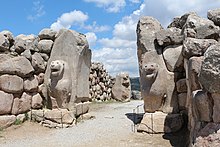
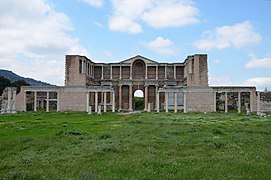

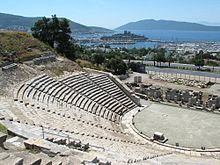
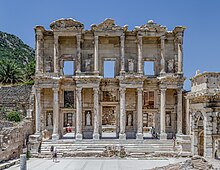


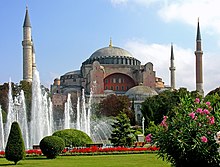
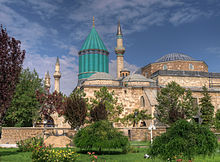
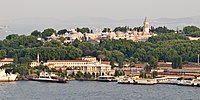


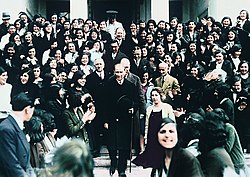





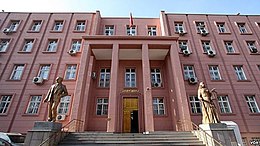

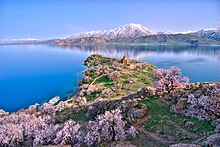

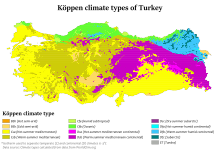


Hiç yorum yok:
Yorum Gönder